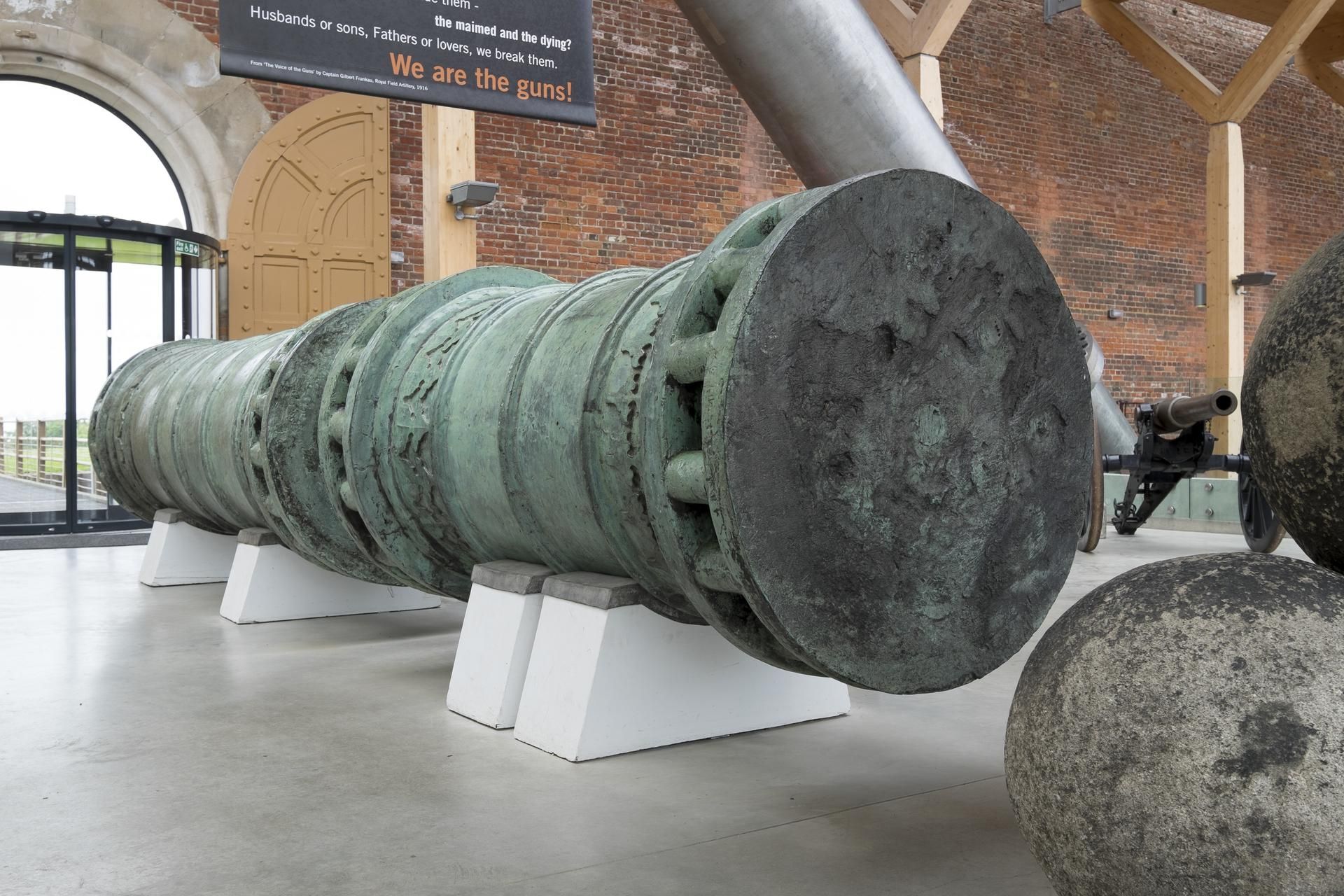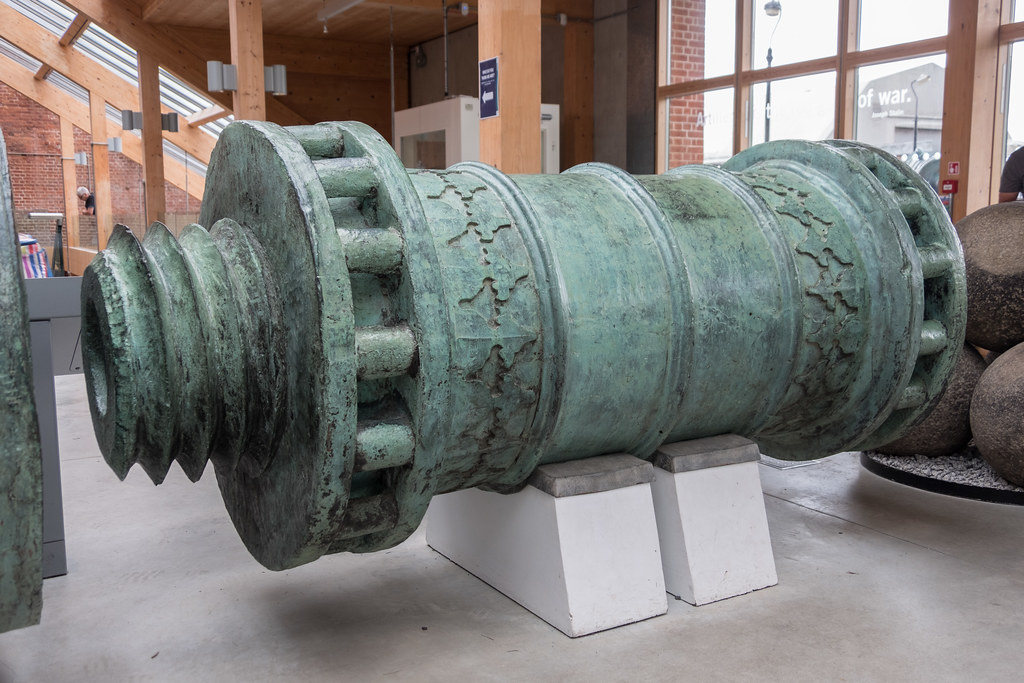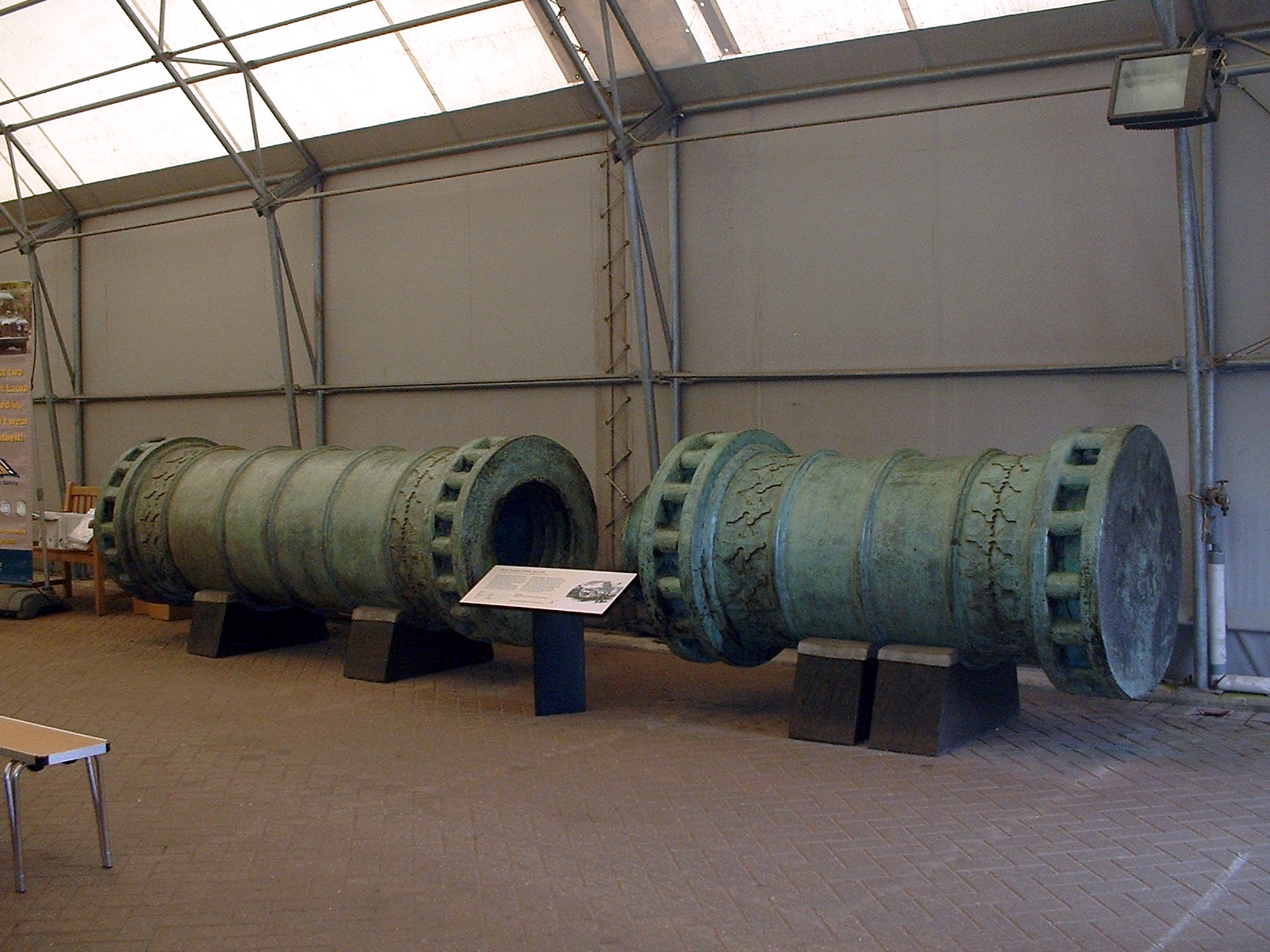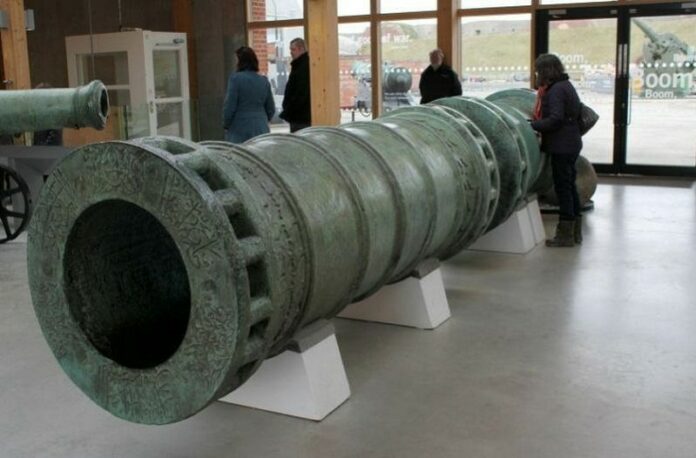The history of warfare is often punctuated by the development of groundbreaking military technologies that have shaped the course of human conflicts. One such remarkable artifact is the Dardanelles Gun, an Ottoman super-sized bombard that has been a silent witness to some of the most pivotal moments in the region’s past. This towering piece of artillery, forged in the 15th century and still in use centuries later, offers a unique window into the military prowess and engineering feats of the Ottoman Empire.
The Dardanelles Gun: A Colossal Cannon of the Ottoman Empire

In 1464, under the leadership of Munir Ali, the Dardanelles Gun was constructed as a response to the formidable Orban bombard used by the Ottomans during their siege of Constantinople in 1453. This enormous cannon, measuring an impressive 518 centimeters (17 feet) in length and weighing over 16 tons, was designed to be a powerful and intimidating weapon capable of wreaking havoc on enemy fortifications.
The Dardanelles Gun was modeled after the Orban bombard, a landmark achievement in Ottoman artillery development. The Orban bombard, named after its creator, the Hungarian engineer Orban, had played a crucial role in the Ottoman’s successful siege of Constantinople, helping them to breach the city’s mighty walls. The Dardanelles Gun was envisioned as a successor to this legendary weapon, built to continue the Ottoman’s dominance in the realm of heavy artillery.
The Dardanelles Gun in Action: Defending the Ottoman Empire

The Dardanelles Gun’s impressive size and firepower made it a formidable deterrent against potential invaders. In 1807, during the failed Dardanelles Operation by the British Royal Navy, the gun was still in use, standing as a testament to the Ottoman’s continued military might. The Dardanelles Operation, also known as the Battle of Abydos, was a failed attempt by the British to force the Dardanelles strait and capture the Ottoman capital of Constantinople.
Despite the British’s numerical advantage and the deployment of their own impressive artillery, the Dardanelles Gun and the other Ottoman defenses proved to be a significant obstacle. The sheer size and power of the cannon, combined with the skilled Ottoman gunners, inflicted heavy casualties on the British fleet, ultimately forcing them to retreat. This decisive victory cemented the Dardanelles Gun’s reputation as a symbol of Ottoman military prowess and the resilience of their empire.
Preserving the Legacy of the Dardanelles Gun

Today, the Dardanelles Gun stands as a remarkable relic of the Ottoman Empire’s military history. Housed in a museum in the town of Çanakkale, Turkey, the cannon is a testament to the engineering feats and technological advancements of the time. Visitors can marvel at its colossal size and imagine the sheer force of its projectiles, which could have devastated even the most formidable of fortifications.
The preservation and study of the Dardanelles Gun have become crucial in understanding the military tactics and technological innovations of the Ottoman Empire. As historians and researchers continue to unravel the secrets of this incredible artifact, they shed light on the broader context of the region’s history, the evolution of warfare, and the enduring legacy of the Ottoman Empire.
The Dardanelles Gun stands as a powerful symbol of the Ottoman Empire’s military prowess and engineering ingenuity. Its creation, inspired by the legendary Orban bombard, and its continued use in the defense of the Ottoman capital centuries later, are a testament to the resourcefulness and technological advancements of this influential civilization. As a preserved relic, the Dardanelles Gun offers a unique opportunity to delve into the rich history of the region, fostering a deeper understanding of the pivotal events that have shaped the course of human history.
